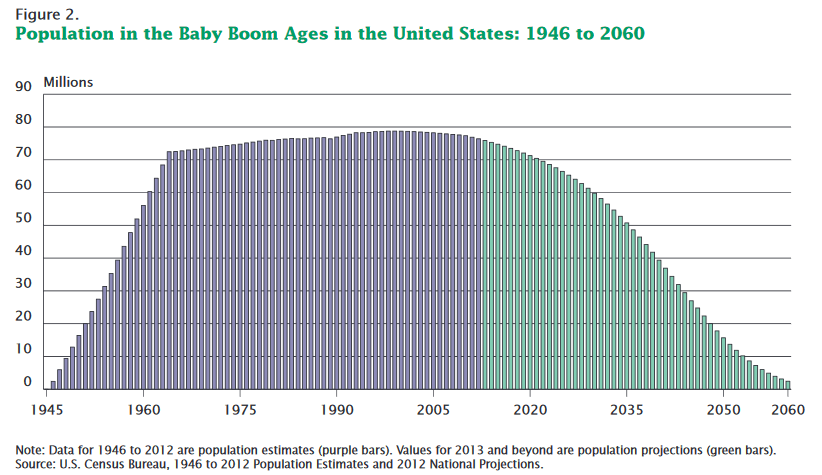
At 75-million strong, Baby Boomers have had an outsized effect on our nation’s economy, culture of entertainment, technology, fashion industry, environment, real estate, and virtually everything else about contemporary life. In our passage from children to codgers, we’ve been like the bulge in a python after a big meal, distorting the shape of America in our passage through life. With 65 million of us still living, our impact remains large. Boomers control an enormous stake in America; our aging and departure will be just as much of a shock to the system as was our arrival.
Health, of course, is at the top of the list; like generations before us we suffer from heart disease, diabetes, cancer, and other ailments. We grew up smack in the middle of the chemical age, a period in human history when roughly 80,000 man-made chemicals were introduced into the environment. My mother used to walk through our house with what she called “the bomb,” a blue metal canister of compressed gas mixed with DDT, which she liberally sprayed in the rooms, on the furniture and those of us sitting on it. New chemicals and additives were introduced into the food chain and directly into food itself, without being tested for their health effects. As children we boomers were the first television generation; we’d sit for hours watching the “boob tube” instead of exercising outdoors. It’s no wonder that the incidence of diabetes and cancer have exploded.
As the present-day experience of Japan indicates, Boomers are going to be the world’s largest generation of dementia patients. The need for “memory” centers will be huge, and homelessness will increase, too. And this is going to happen soon; it won’t mean waiting until Boomers are 90 years old. It’s uncertain whether boomers will live as long as our parents; the longevity trend line is heading down, not up.
Over 40% of the residential real estate in America is occupied by Boomers. During the next two decades, nearly all of it will be sold, abandoned, or inherited. The home vacancy rate in Japan, which is about a decade ahead of U.S. trends, is so high that millions of homes are vacant and literally given away for the asking by the Japanese government. We may be in the middle of a housing availability and affordability crisis but wait ten years and the situation may well reverse itself, causing a price collapse in the real estate market.
Until 2019, no single generation has been as large as that of the Boomers. Social security and Medicare will be stretched beyond their existing financial limits and at risk of insolvency unless major steps are taken now to bolster revenues. Meanwhile, the Boomer demographic still drives a massive amount of advertising, product development, marketing plans, drug investment, and government policy.
The need for qualified and trustworthy caregivers will explode into the tens-of-millions, alongside scams, rip-offs, and fraud directed at Boomers and their savings. Prices for funeral, burial, cremation, and other end-of-life activities will increase as demand exceeds the current capacity of funeral homes, cemeteries, and mortuaries. Research by the Insured Retirement Institute found that 45% of boomers have no retirement savings and more than a quarter of those who do have less than $100,000, yet 40% will need long term care.
None of this is rocket science; it’s all in the numbers.
Wonderful post. It is essential that this message gets out to a wider audience. So many opportunities exist for minimizing suffering and maximizing sustainability if we but raise our eyes a bit further down the road.
all in the numbers? so is rocket science.